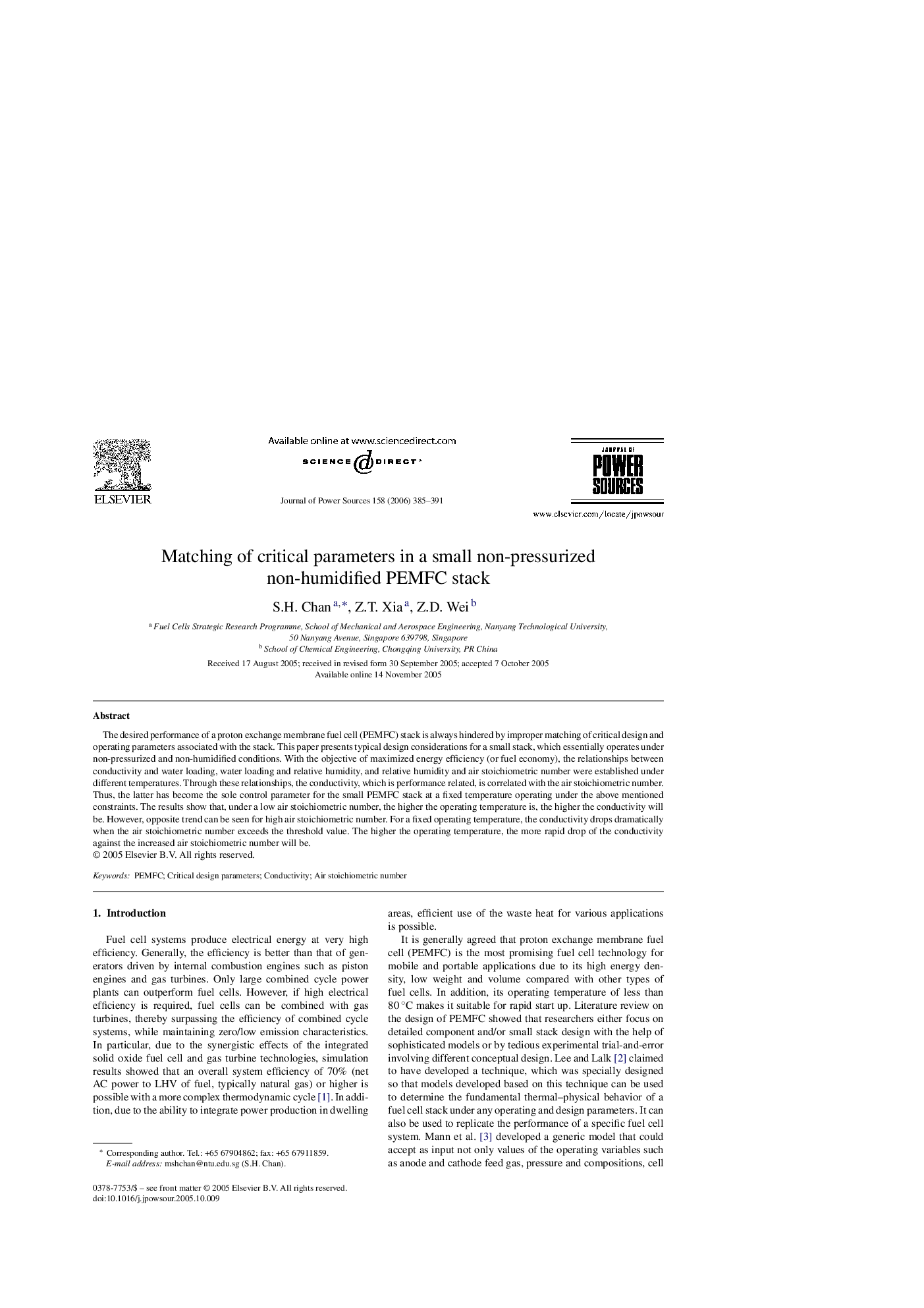| Article ID | Journal | Published Year | Pages | File Type |
|---|---|---|---|---|
| 1287581 | Journal of Power Sources | 2006 | 7 Pages |
The desired performance of a proton exchange membrane fuel cell (PEMFC) stack is always hindered by improper matching of critical design and operating parameters associated with the stack. This paper presents typical design considerations for a small stack, which essentially operates under non-pressurized and non-humidified conditions. With the objective of maximized energy efficiency (or fuel economy), the relationships between conductivity and water loading, water loading and relative humidity, and relative humidity and air stoichiometric number were established under different temperatures. Through these relationships, the conductivity, which is performance related, is correlated with the air stoichiometric number. Thus, the latter has become the sole control parameter for the small PEMFC stack at a fixed temperature operating under the above mentioned constraints. The results show that, under a low air stoichiometric number, the higher the operating temperature is, the higher the conductivity will be. However, opposite trend can be seen for high air stoichiometric number. For a fixed operating temperature, the conductivity drops dramatically when the air stoichiometric number exceeds the threshold value. The higher the operating temperature, the more rapid drop of the conductivity against the increased air stoichiometric number will be.
